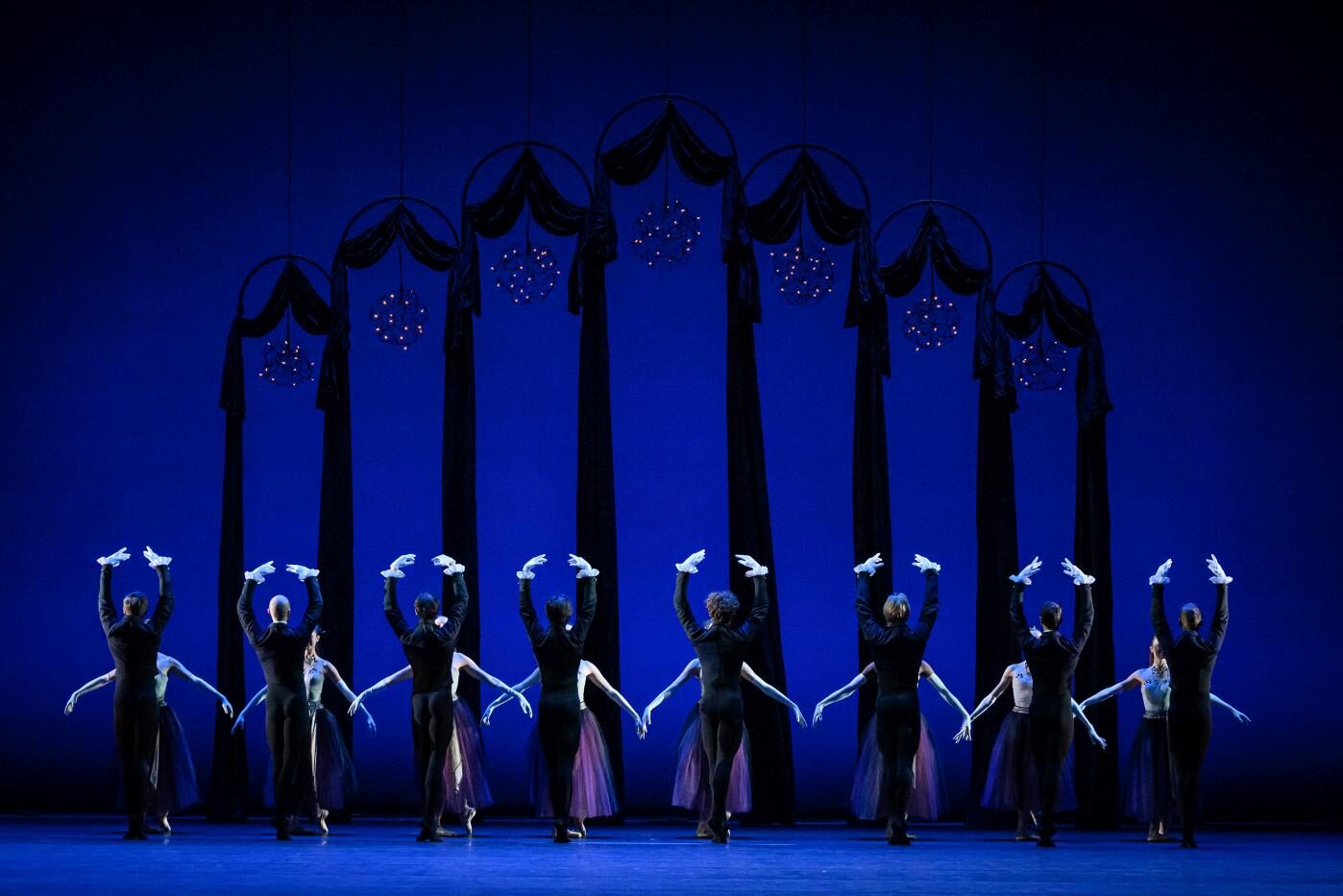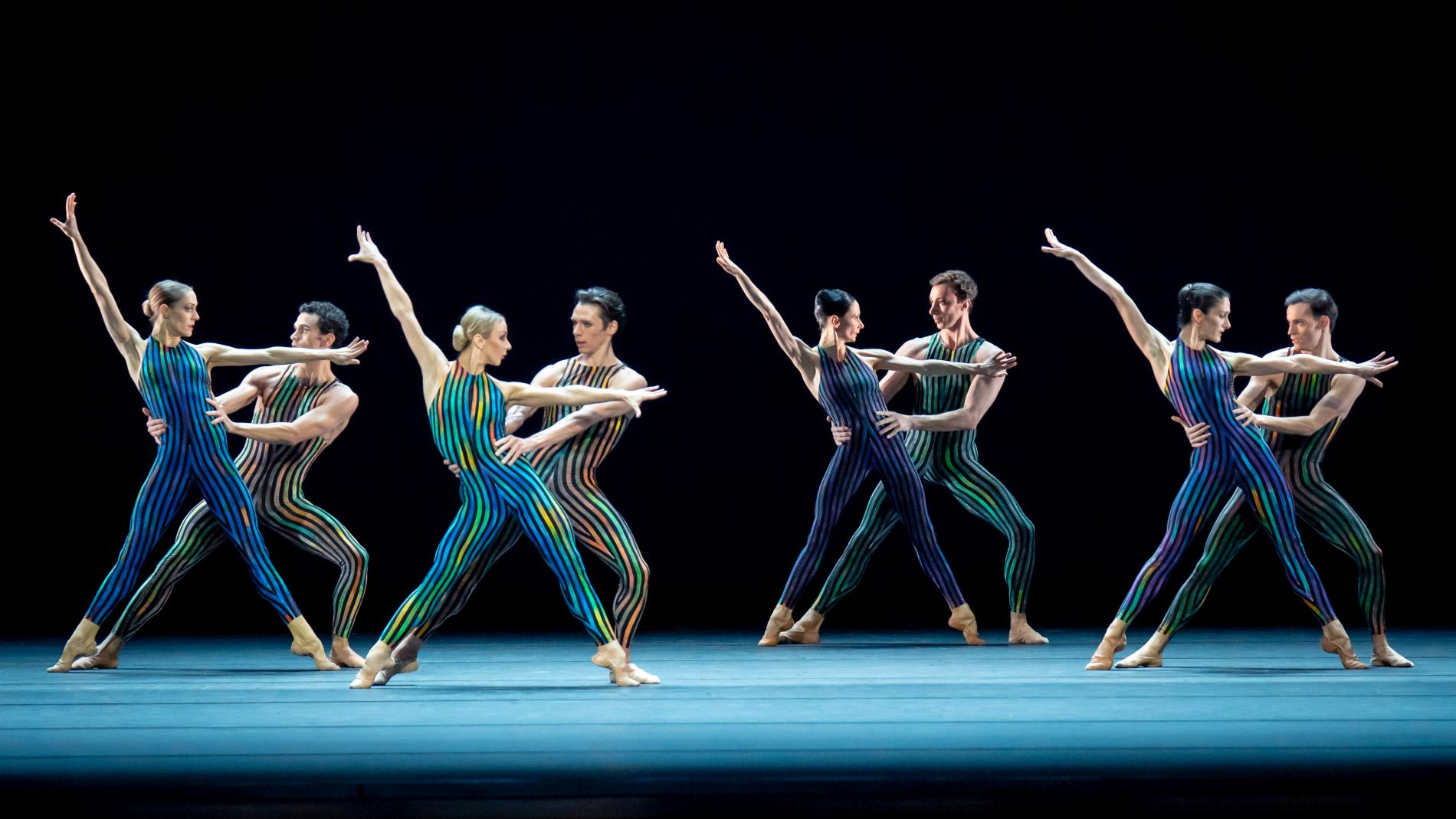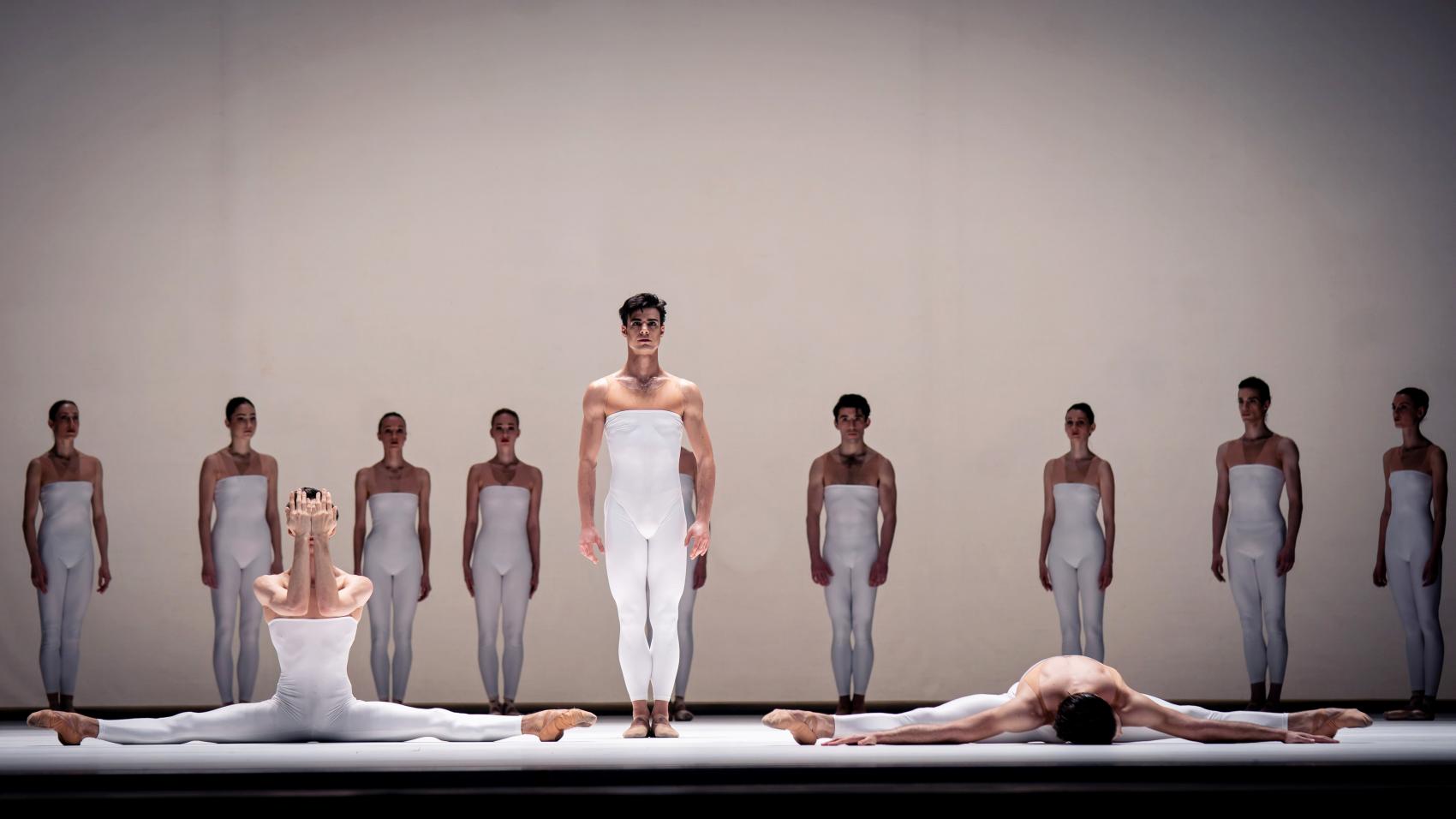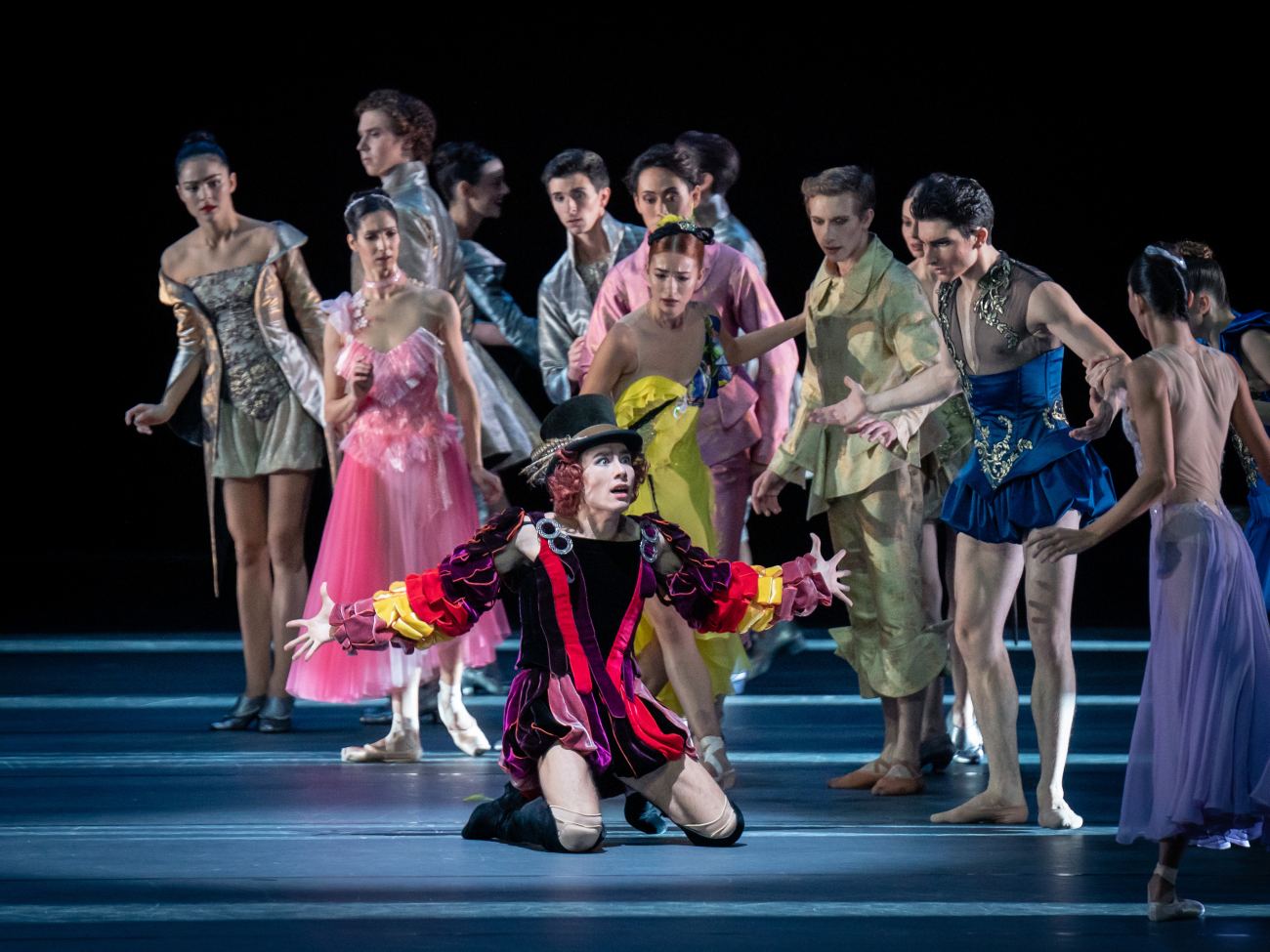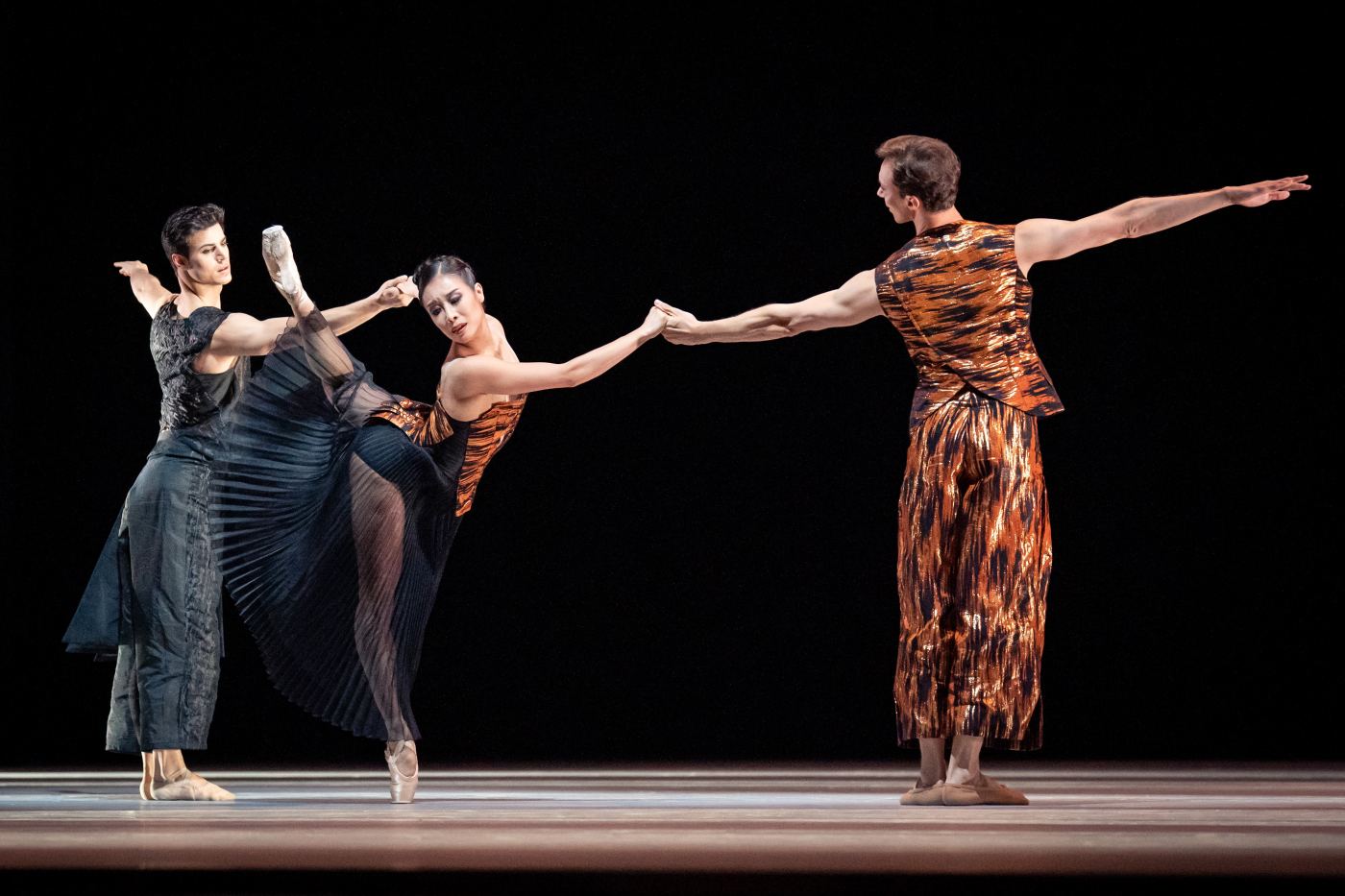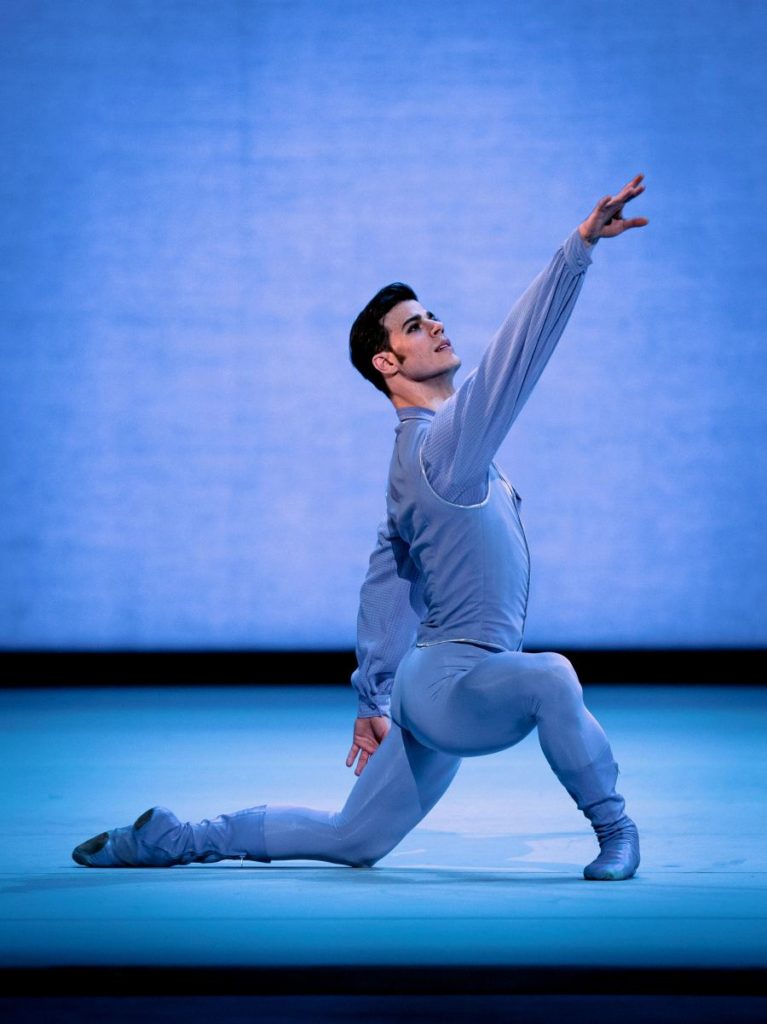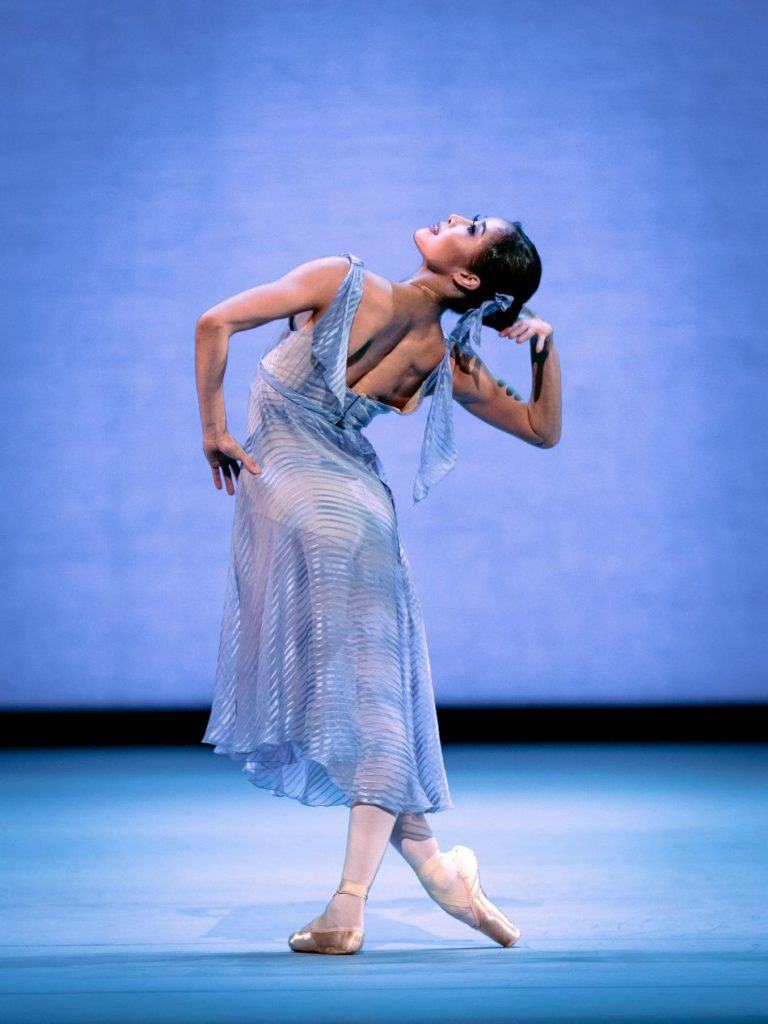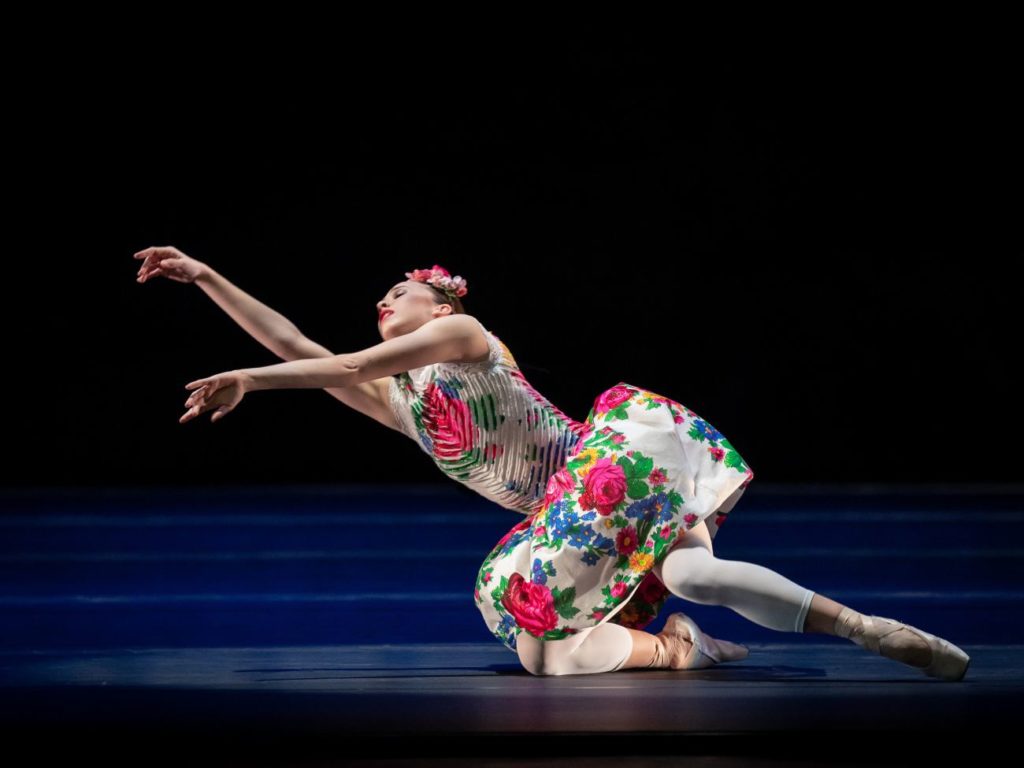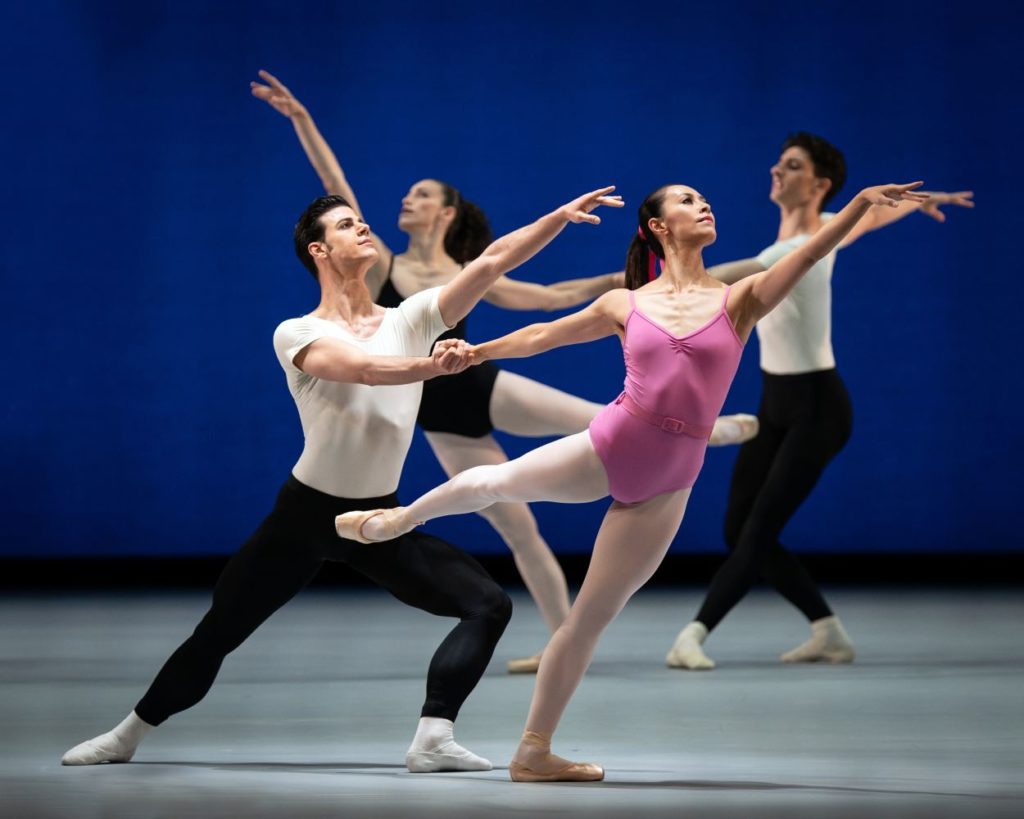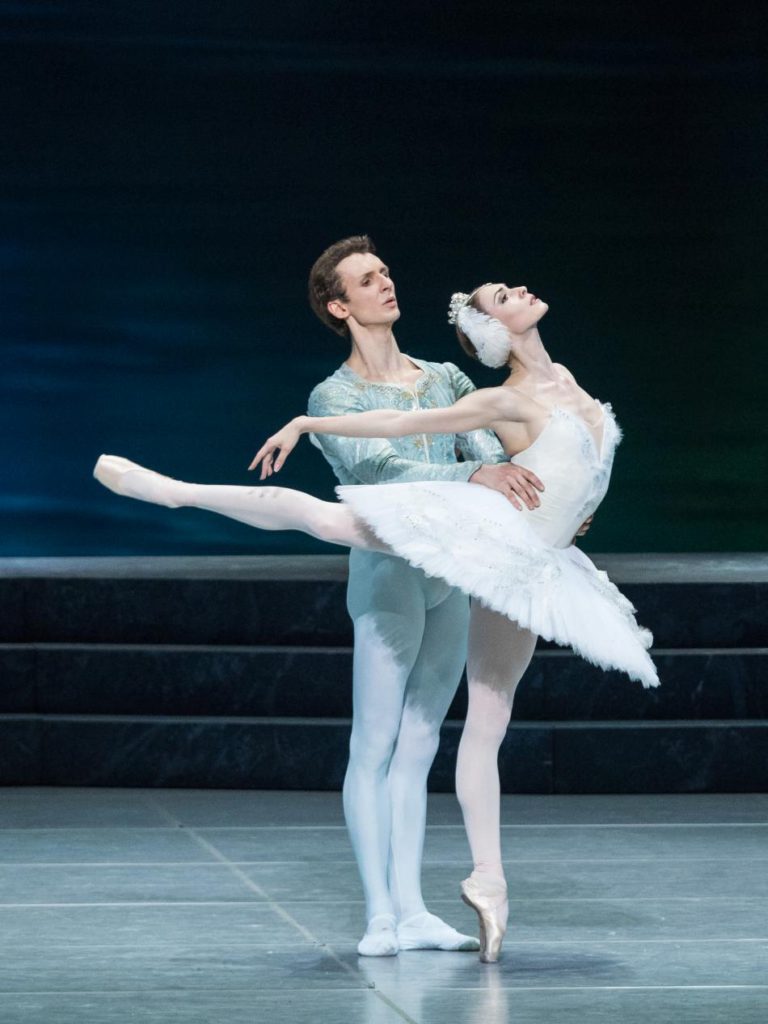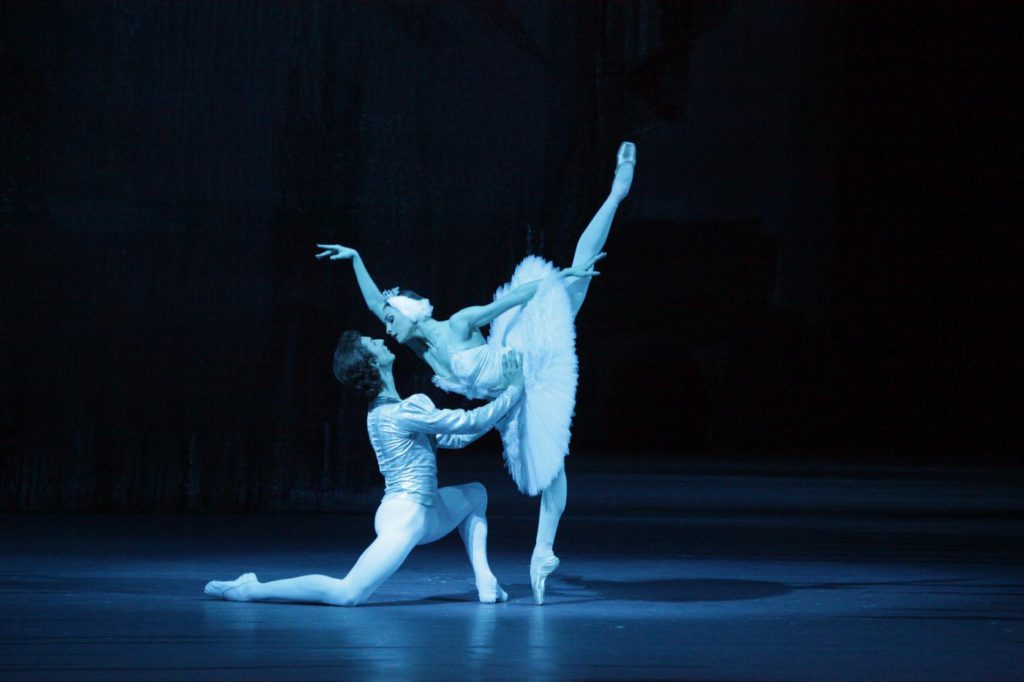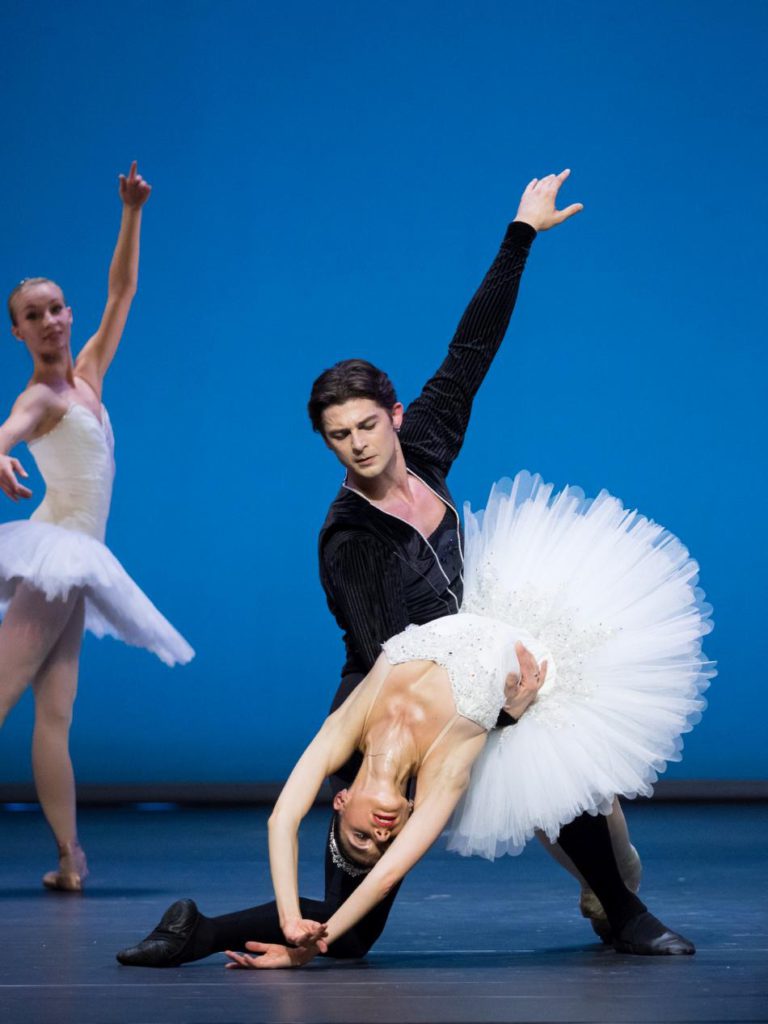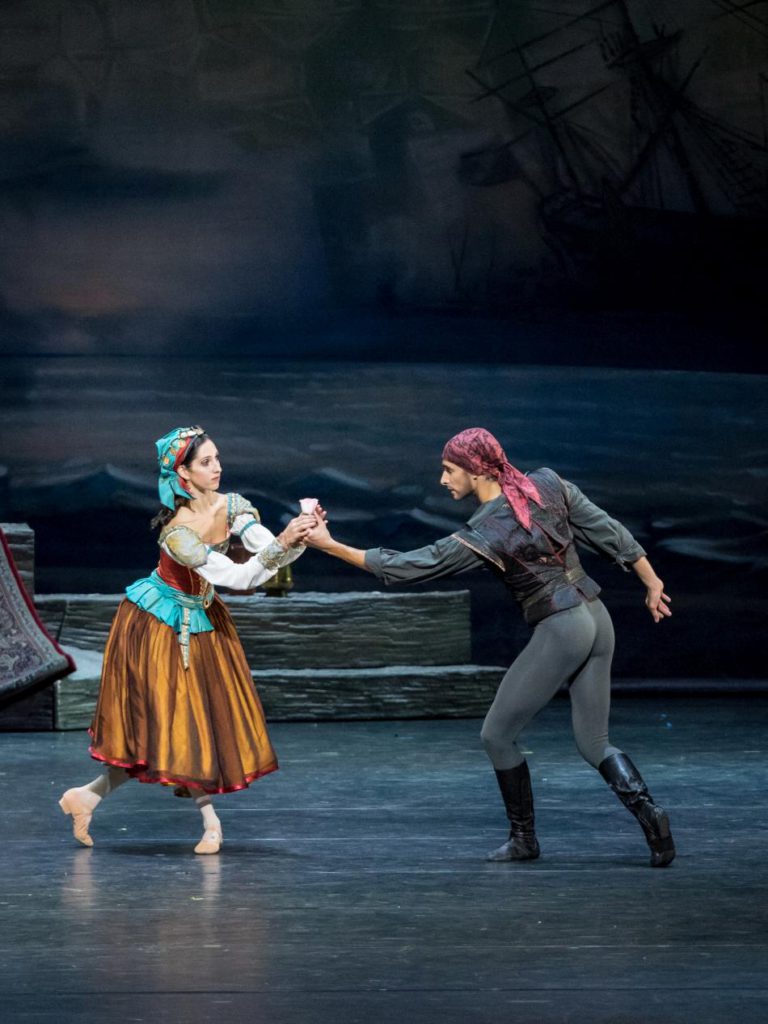Incomprehensible
“The Lady of the Camellias”
Vienna State Ballet
Vienna State Opera
Vienna, Austria
March 24, 2024, (live stream)
by Ilona Landgraf
Copyright © 2024 by Ilona Landgraf
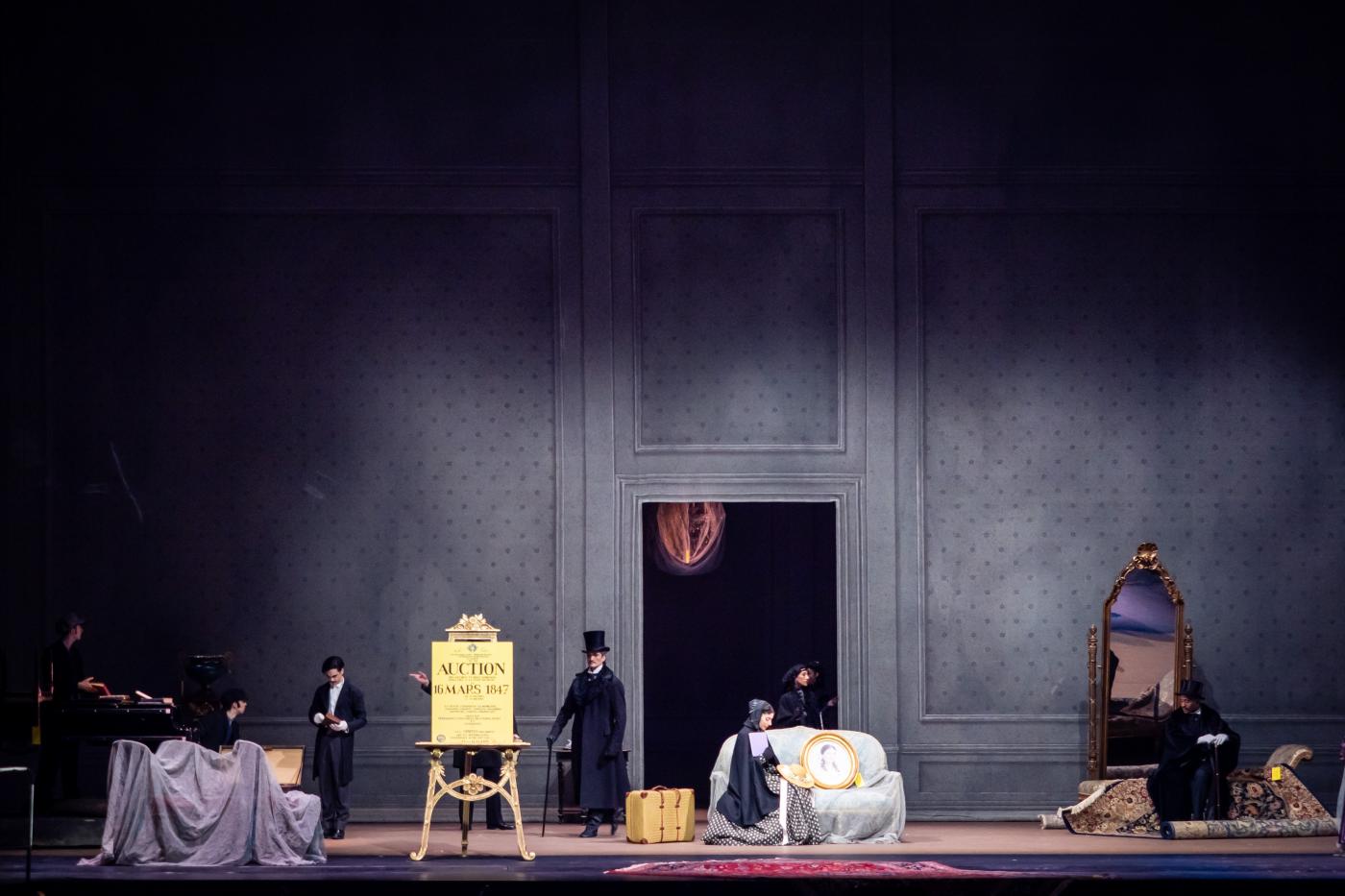 Shouts of “Bravi!” mingled with enthusiastic applause after the curtain closed on John Neumeier’s The Lady of the Camellias last Sunday at the Vienna State Opera. I, who was following the performance on screen, was less happy. Being familiar with this piece as it was performed by other companies, I felt that this premiere left a lot to be desired.
Shouts of “Bravi!” mingled with enthusiastic applause after the curtain closed on John Neumeier’s The Lady of the Camellias last Sunday at the Vienna State Opera. I, who was following the performance on screen, was less happy. Being familiar with this piece as it was performed by other companies, I felt that this premiere left a lot to be desired.
To begin with, the choreography—almost forty-five years after its creation—suffers from the same mannerisms present in large parts of Neumeier’s oeuvre. The tools that he uses to express his protagonists’ inner life are repetitive. For example, books, confectionery, and bunches of flowers slipped from the dancers’ grip to signal astonishment or absent-mindedness. The number of people who stumbled, fell, barged into one another, and ran around precipitously was remarkable. As in other Neumeier-ballets, the buffoon (in this case, Count N., whom Géraud Wielick turned into an especially silly specimen of jealous lover) wore glasses. That Neumeier intertwined Marguerite and Armand’s fate with that of Manon Lescaut—a connection that is inherent in Alexandre Dumas’s novel—would be ingenious if the relevant scenes were less mawkish and didactic.
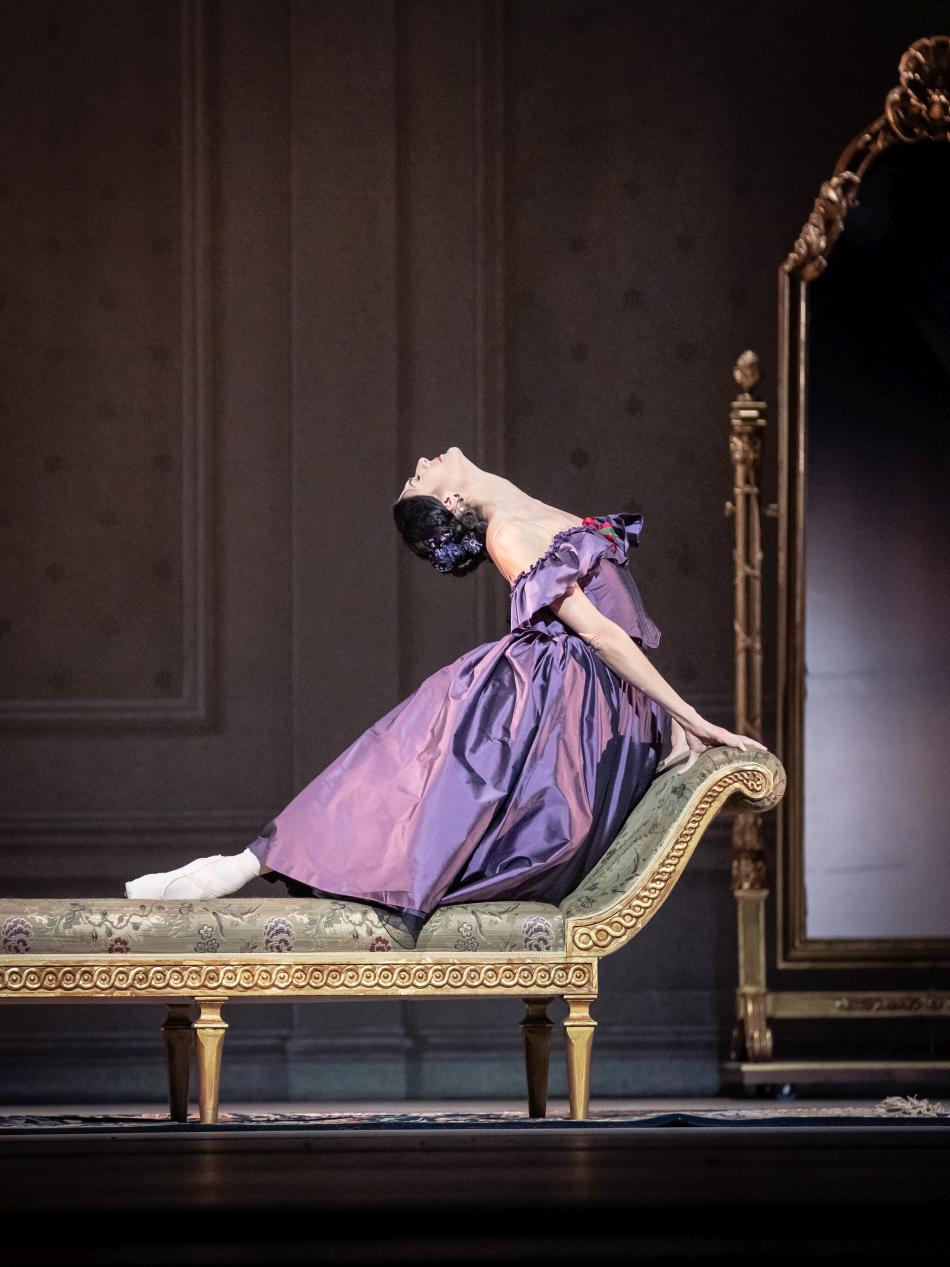
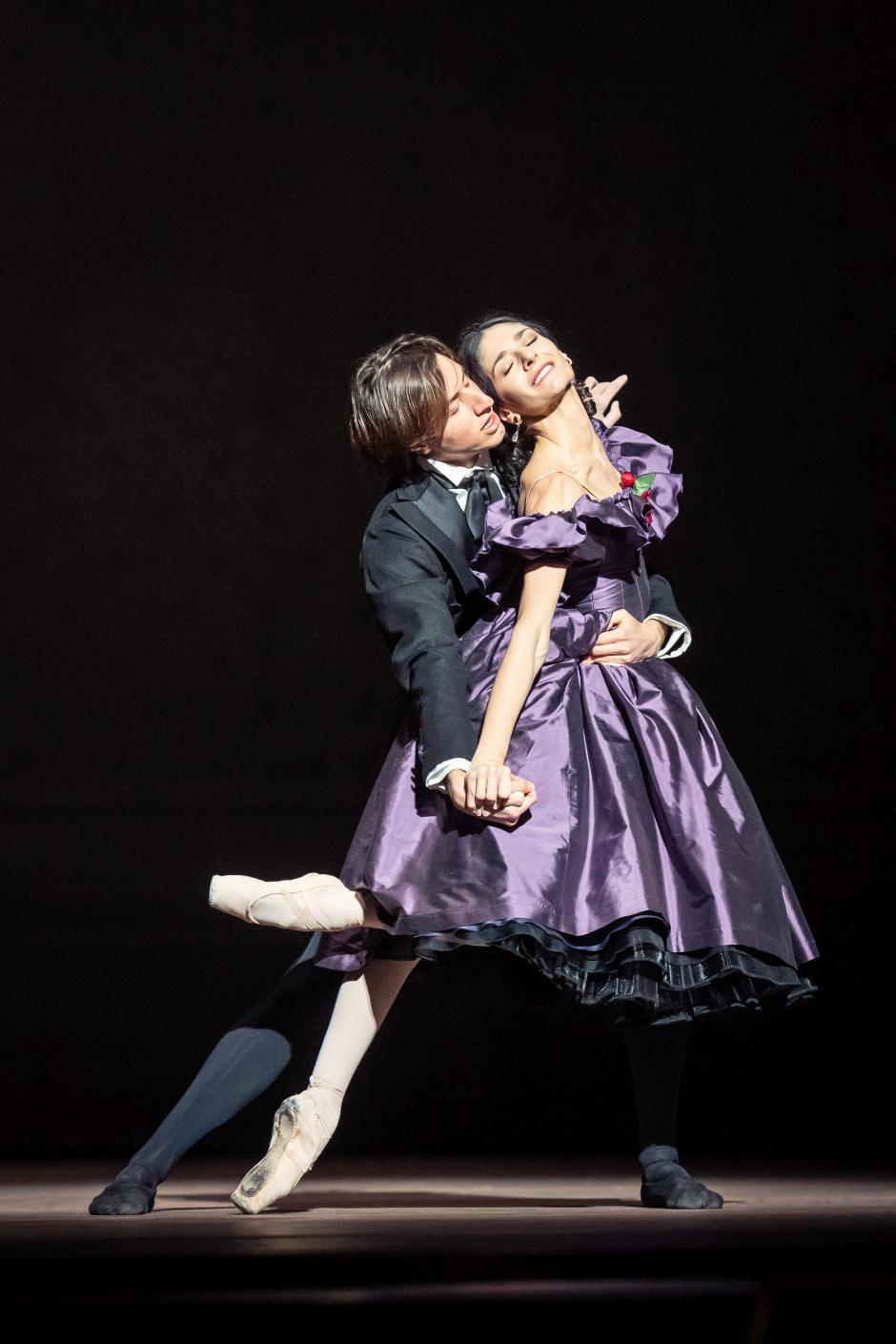
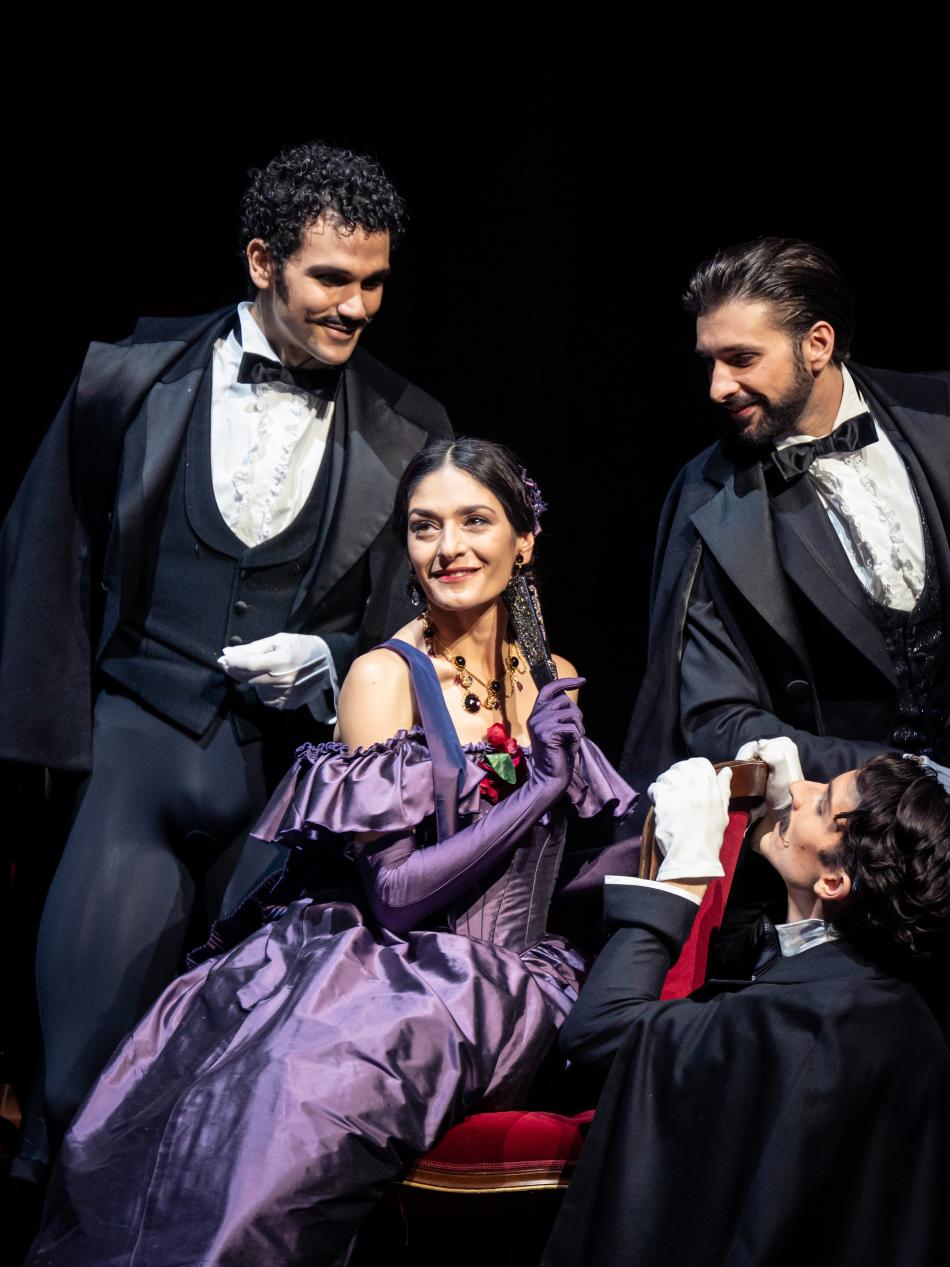 To be clear, the libretto of Lady of the Camellias is expert work. Each pas de deux is a highlight, Chopin’s music fits perfectly, and Jürgen Rose’s set and costume designs are a treat for the eyes. Hyo-Jung Kang was a fine Manon Lescaut, and Marcos Menha danced the role of Des Grieux impeccably except for some turns. I liked the loyalty and restraint of Nanina (Adi Hanan), Marguerite’s servant. The Count (Rashaen Arts) behaved offish in public but seemed more responsive when intimate with Marguerite. The sleek Gaston (Masayu Kimoto), by comparison, oozed virility, which he directed primarily toward Ioanna Avraam’s sassy Prudence. Her mere smile reflected her happy-go-lucky nature. She had more decency than the pretty Olympia (Elena Bottaro) who, as she seduced Armand right under Marguerite’s nose, revealed her true character—an impertinent bitch.
To be clear, the libretto of Lady of the Camellias is expert work. Each pas de deux is a highlight, Chopin’s music fits perfectly, and Jürgen Rose’s set and costume designs are a treat for the eyes. Hyo-Jung Kang was a fine Manon Lescaut, and Marcos Menha danced the role of Des Grieux impeccably except for some turns. I liked the loyalty and restraint of Nanina (Adi Hanan), Marguerite’s servant. The Count (Rashaen Arts) behaved offish in public but seemed more responsive when intimate with Marguerite. The sleek Gaston (Masayu Kimoto), by comparison, oozed virility, which he directed primarily toward Ioanna Avraam’s sassy Prudence. Her mere smile reflected her happy-go-lucky nature. She had more decency than the pretty Olympia (Elena Bottaro) who, as she seduced Armand right under Marguerite’s nose, revealed her true character—an impertinent bitch.
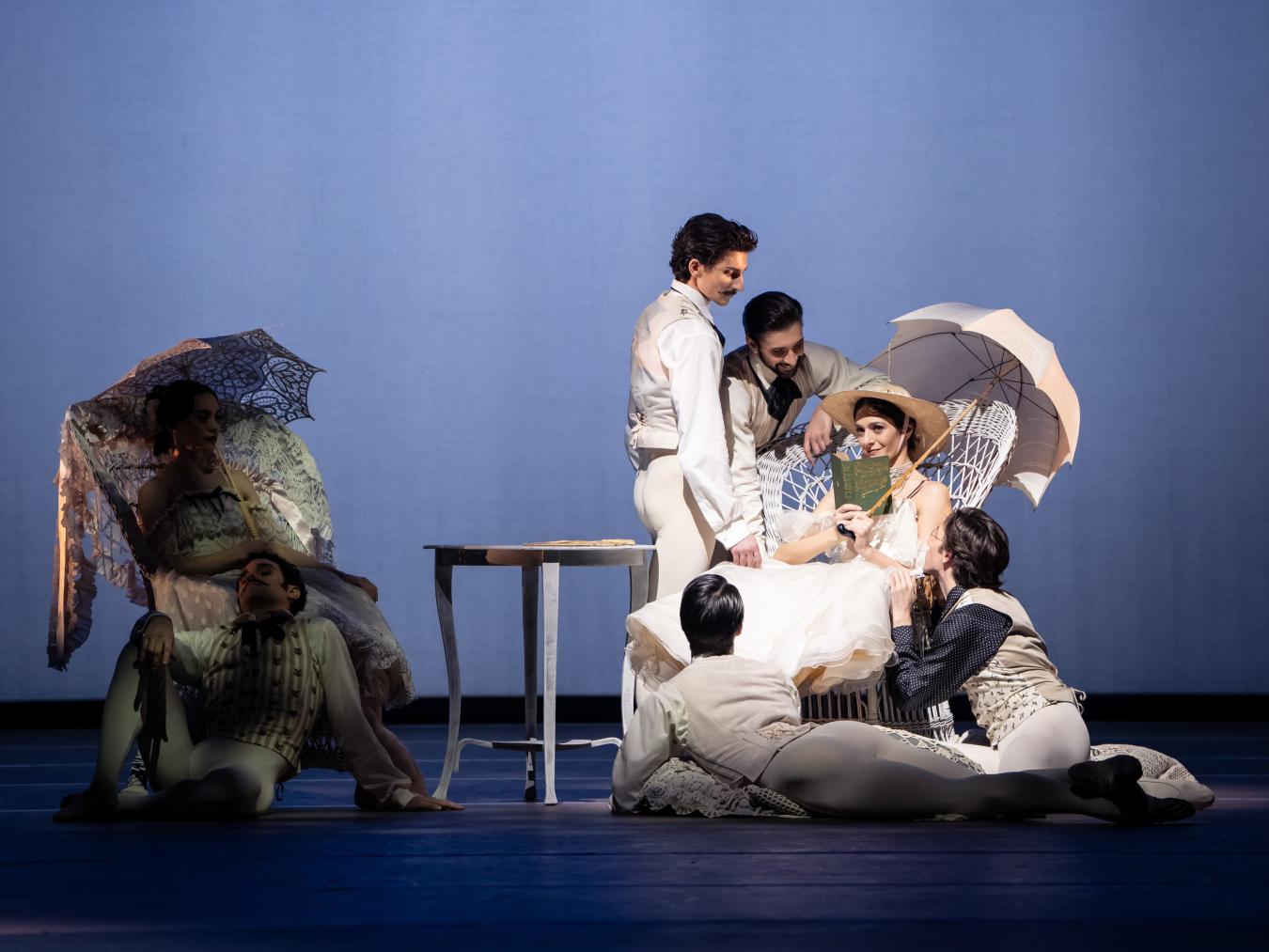
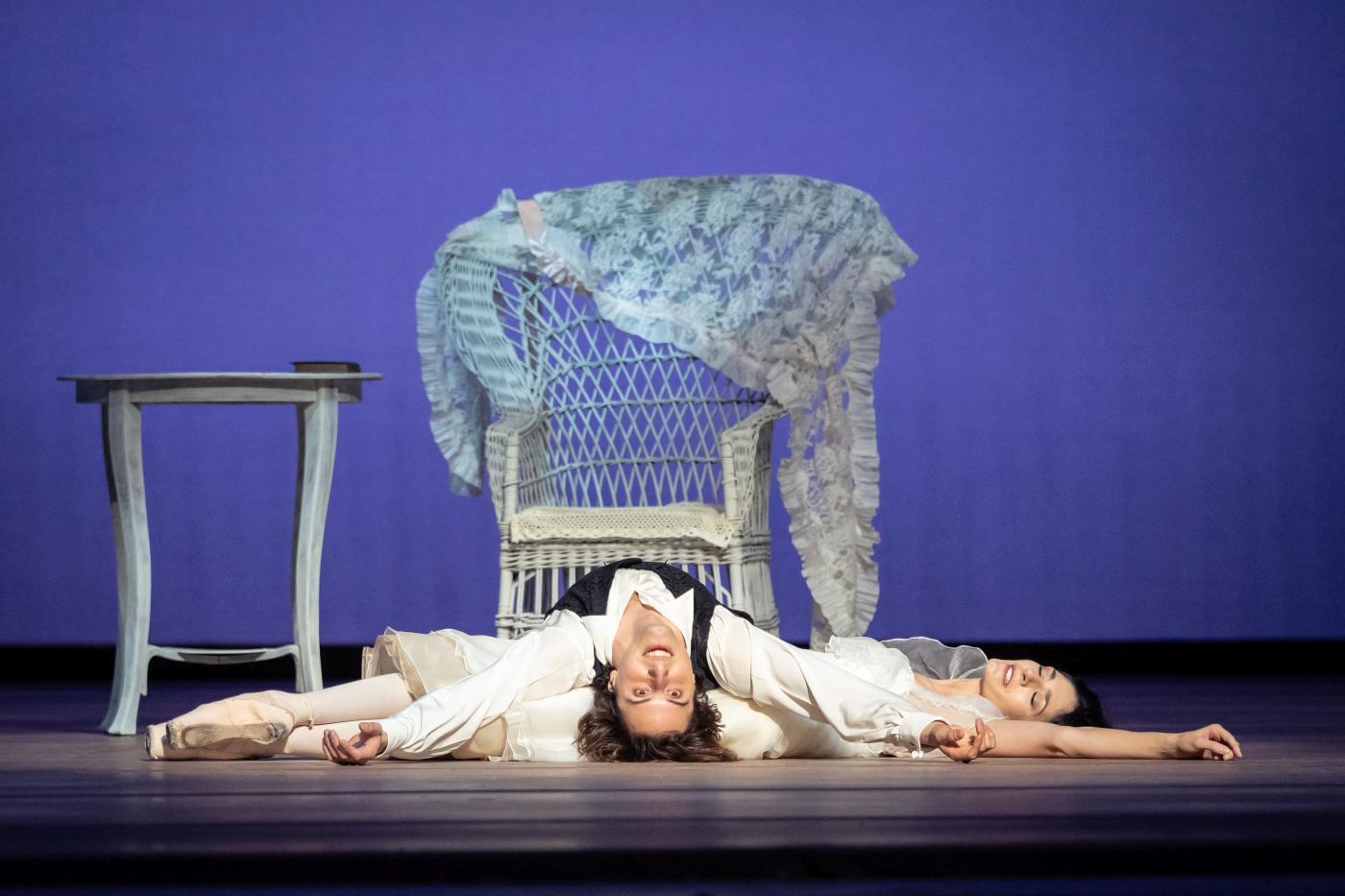 While the supporting characters and the corps gave reputable performances, the leading couple was so obviously ill-cast that it was beyond my comprehension why they were chosen for the premiere. True, Ketevan Papava has a versatile face. Her Marguerite looked young and happy, sometimes naive, and then aristocratic. When badly snubbed by Armand (Timoor Afshar), she became haggard, as if suddenly aged by decades. She seemed most inside herself in the countryside while wearing a dress that was as breezy as the vibes. My sympathy was stirred as I watched her crouch in front of Armand like a picture of misery after having been forced to leave him. Yet the confrontation with Armand’s father, Monsieur Duval (Eno Peci), wasn’t convincing. Both seemed to dance as if their steps were in a language unfamiliar to them.
While the supporting characters and the corps gave reputable performances, the leading couple was so obviously ill-cast that it was beyond my comprehension why they were chosen for the premiere. True, Ketevan Papava has a versatile face. Her Marguerite looked young and happy, sometimes naive, and then aristocratic. When badly snubbed by Armand (Timoor Afshar), she became haggard, as if suddenly aged by decades. She seemed most inside herself in the countryside while wearing a dress that was as breezy as the vibes. My sympathy was stirred as I watched her crouch in front of Armand like a picture of misery after having been forced to leave him. Yet the confrontation with Armand’s father, Monsieur Duval (Eno Peci), wasn’t convincing. Both seemed to dance as if their steps were in a language unfamiliar to them.
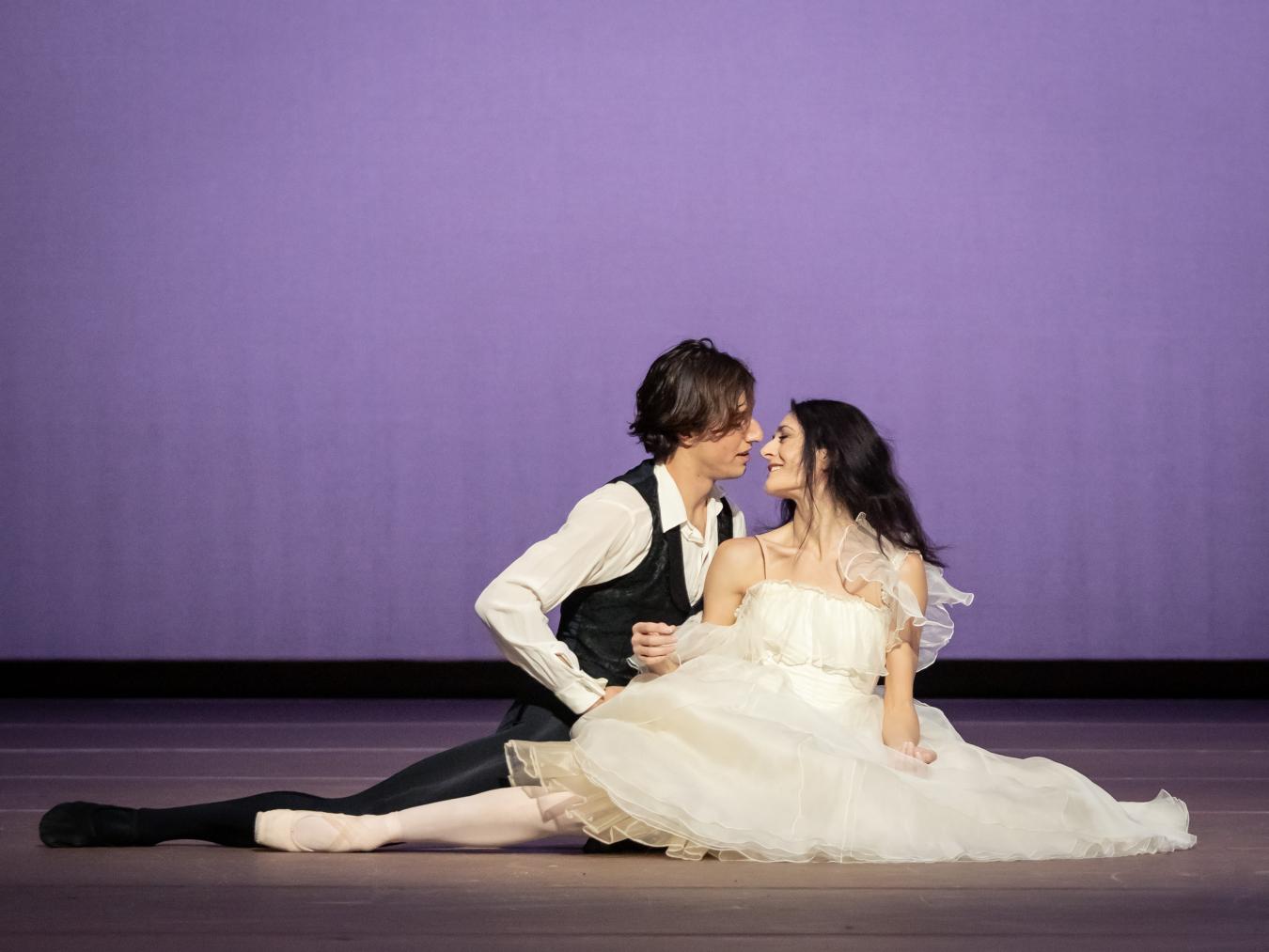
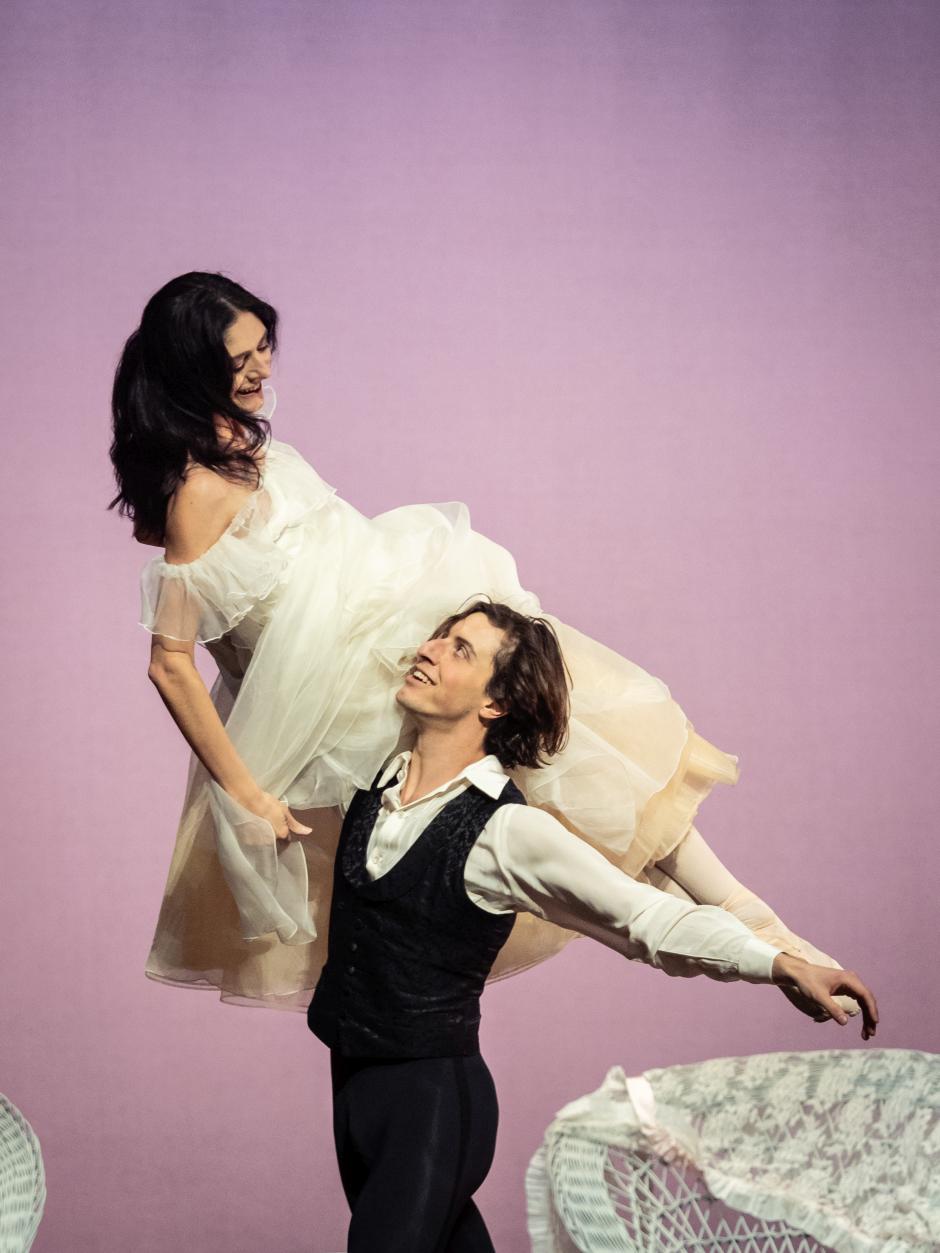 The main problem was, however, that Ketevan’s Marguerite lacked the allure you’d expect from a courtesan. She was not the type of woman at whose feet men lie. Compare that to, for example, Svetlana Zakharova’s Marguerite. Even, for example, the way that Zakharova invited Armand to take a seat next to her—her refinement and coquetry, the scintillating femininity—will make the difference obvious.
The main problem was, however, that Ketevan’s Marguerite lacked the allure you’d expect from a courtesan. She was not the type of woman at whose feet men lie. Compare that to, for example, Svetlana Zakharova’s Marguerite. Even, for example, the way that Zakharova invited Armand to take a seat next to her—her refinement and coquetry, the scintillating femininity—will make the difference obvious.
Timoor Afshar’s performance of Armand left me puzzled given that he completed his training at the John Cranko School, which is known for its solid training. After his graduation in 2016, Afshar joined the Stuttgart Ballet, which he left to join the Vienna State Ballet this season. I saw him twice at Cranko School galas and once in 2022 in a modern piece with the Stuttgart Ballet, hence, I cannot comment on his overall artistic effort.
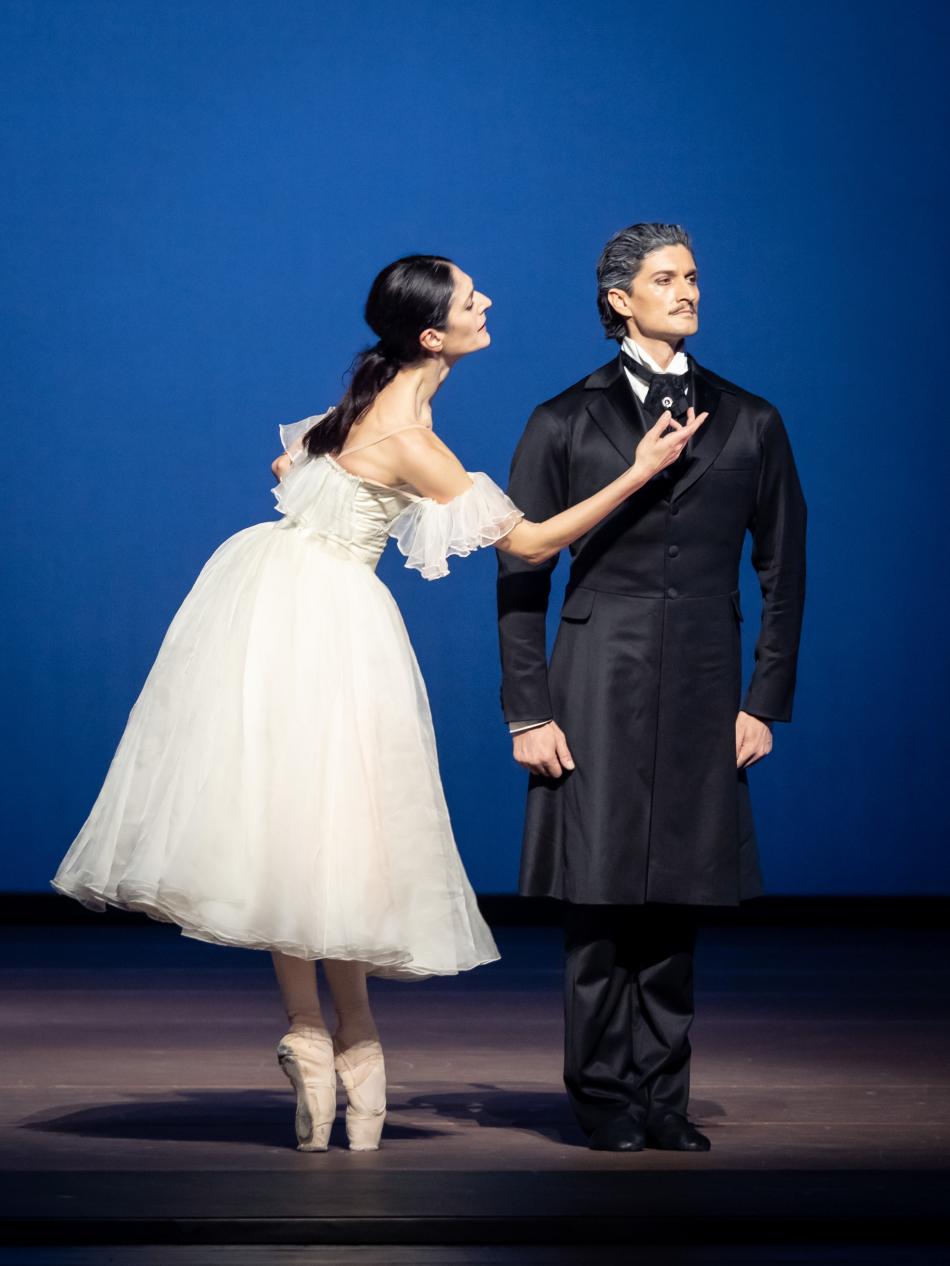
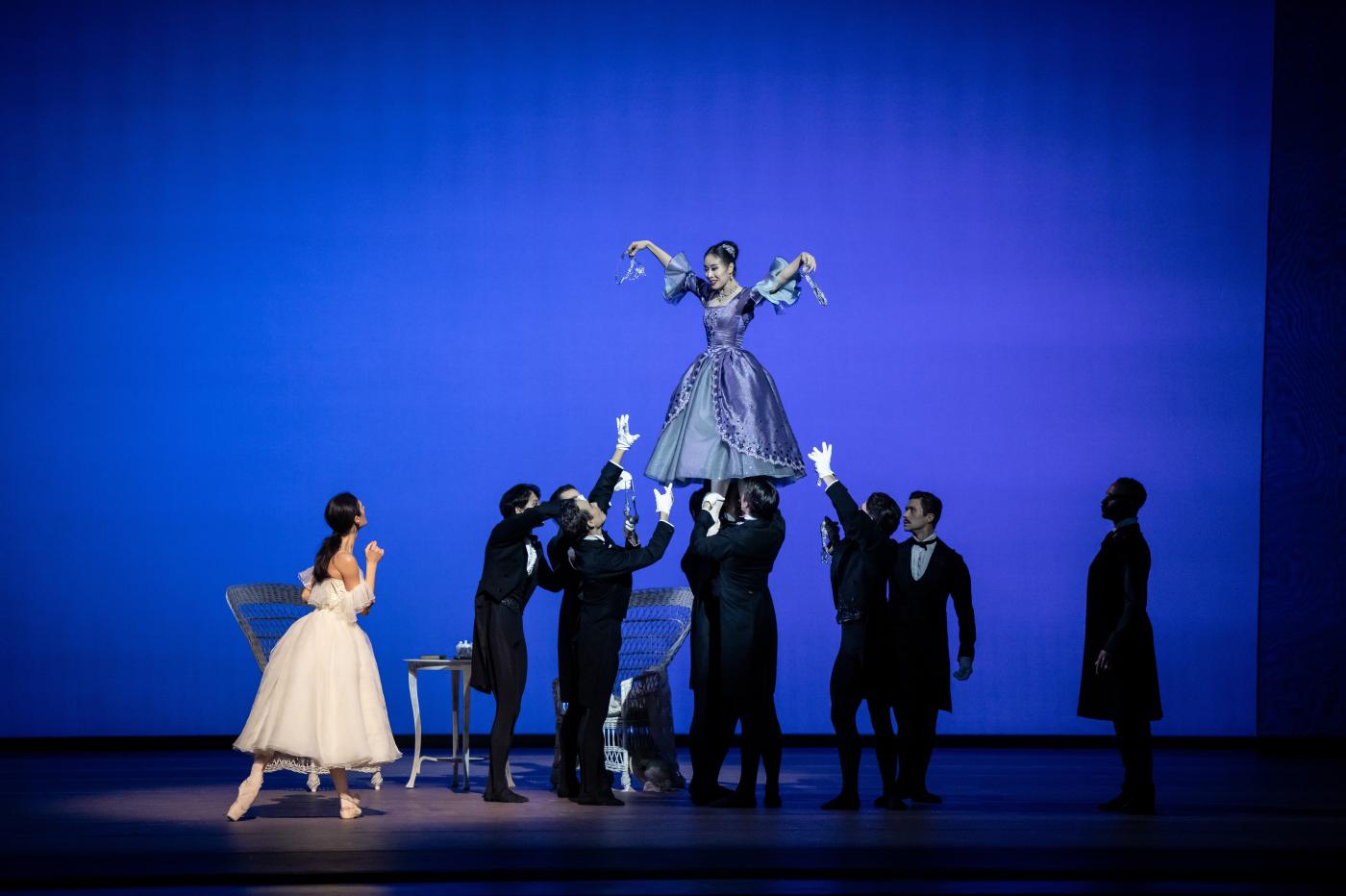
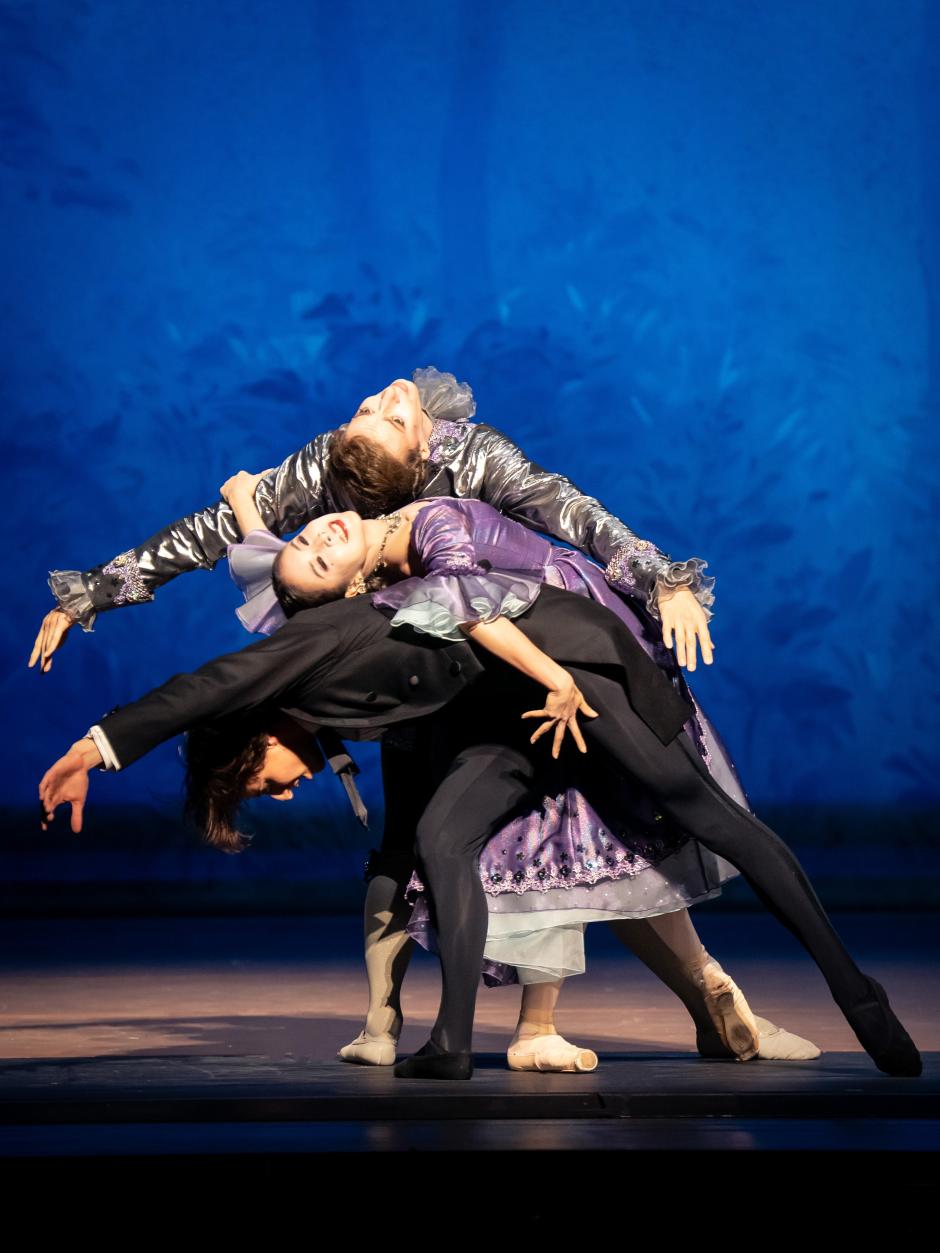 In any case, his Armand lacked the demeanor of a classical dancer from the moment he set foot on stage. The way he slumped at Marguerite’s feet made me think of a bag of potatoes. Although Afshar tried hard, his fury after Marguerite’s secret departure wasn’t fed from inside. Perhaps emotions echoed deep inside of him, but little surfaced. I had to re-watch Jiří Bubeníček’s interpretation of Armand afterward to reassure myself of the myriad of subtle feelings that can be reflected in a face. Afshar’s technique was so-so, but in the final (black) pas de deux, matters turned cringy. Perhaps the lovers’ unrestrained abandon made them forsake the choreography? Or did Afshar run out of stamina given that each lift was a struggle?
In any case, his Armand lacked the demeanor of a classical dancer from the moment he set foot on stage. The way he slumped at Marguerite’s feet made me think of a bag of potatoes. Although Afshar tried hard, his fury after Marguerite’s secret departure wasn’t fed from inside. Perhaps emotions echoed deep inside of him, but little surfaced. I had to re-watch Jiří Bubeníček’s interpretation of Armand afterward to reassure myself of the myriad of subtle feelings that can be reflected in a face. Afshar’s technique was so-so, but in the final (black) pas de deux, matters turned cringy. Perhaps the lovers’ unrestrained abandon made them forsake the choreography? Or did Afshar run out of stamina given that each lift was a struggle?
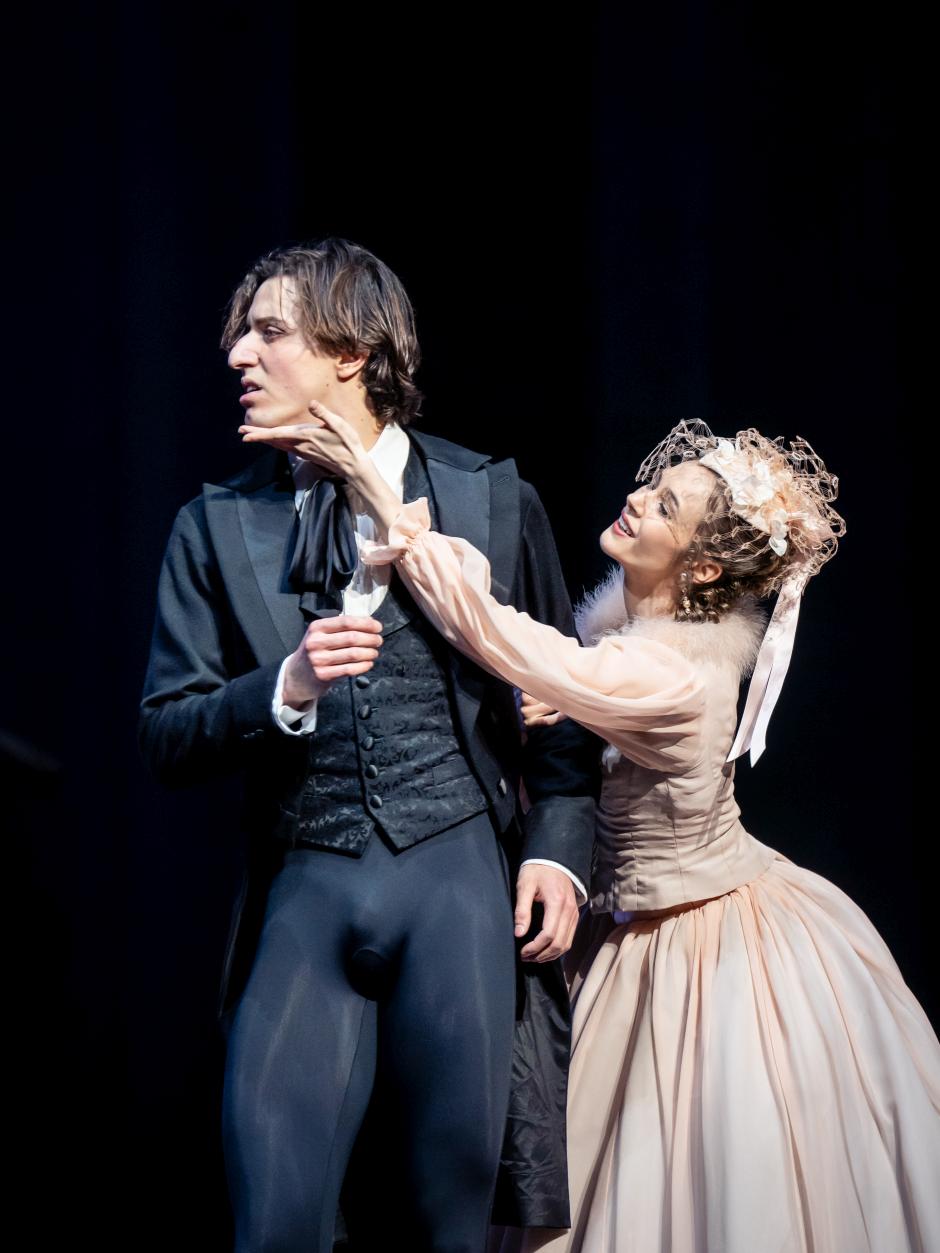
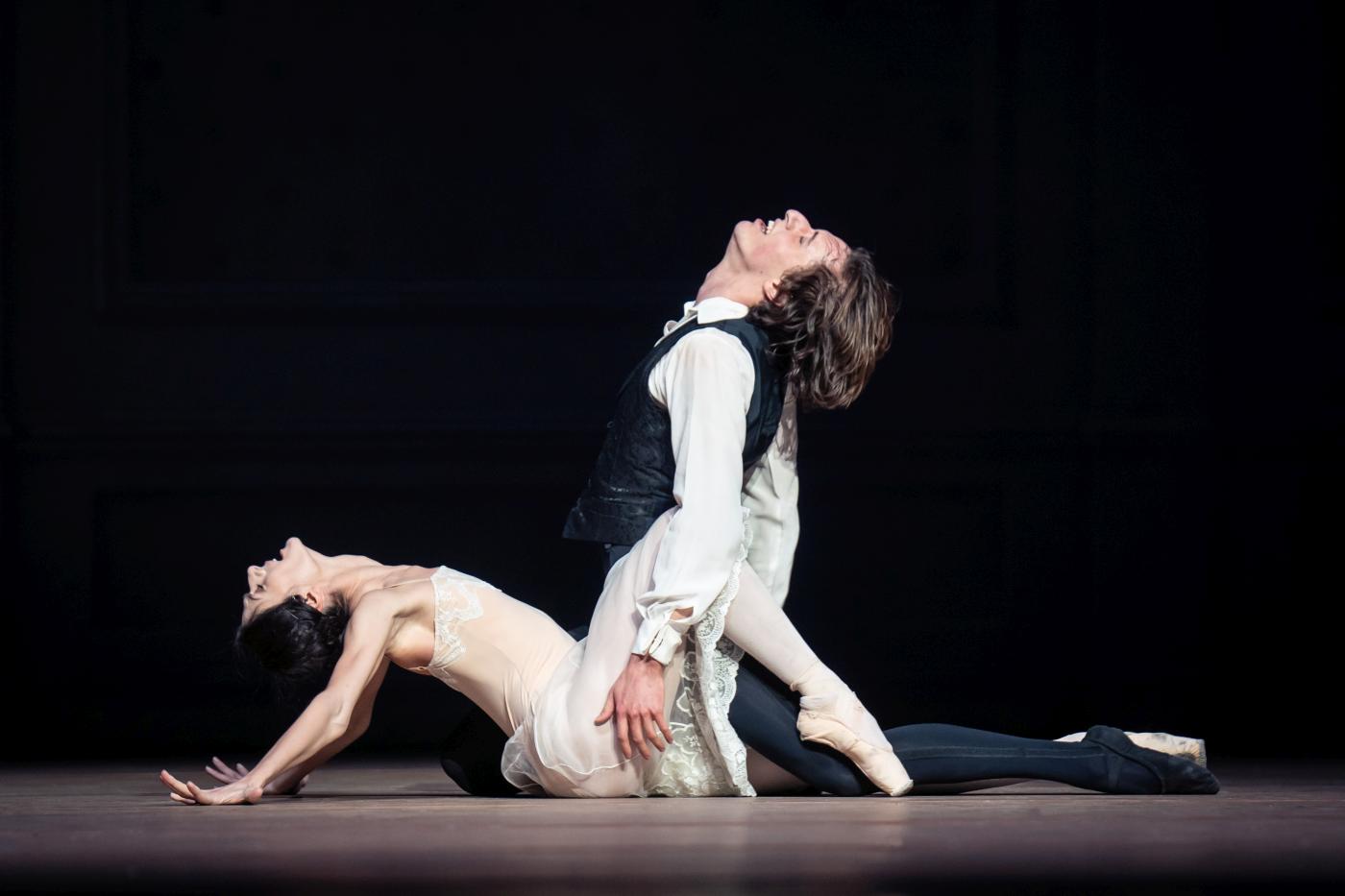
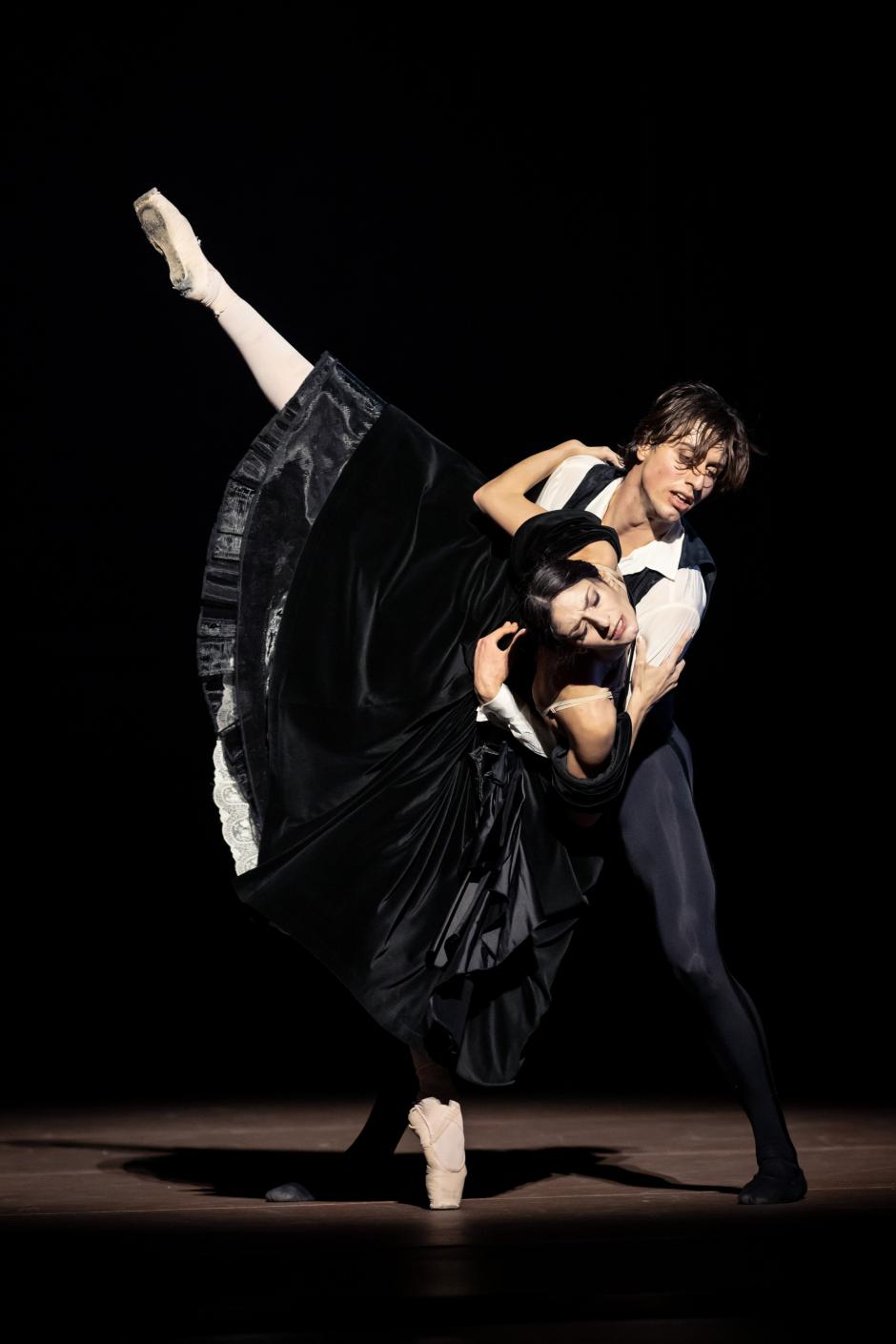 Of the two highlights of the evening, one was pianist Igor Zapravdin who joined the dancers on stage during the auction and the countryside retreat. Zapravdin’s lively charisma and spirited playing were a joy. The other highlight was part of a video shown during the break. It featured Jürgen Rose overseeing the costume fitting. The eighty-six-year-old looked pleased as he repeated a comment by his colleagues: “Rose, you still notice each petty crap.” I’m glad he does.
Of the two highlights of the evening, one was pianist Igor Zapravdin who joined the dancers on stage during the auction and the countryside retreat. Zapravdin’s lively charisma and spirited playing were a joy. The other highlight was part of a video shown during the break. It featured Jürgen Rose overseeing the costume fitting. The eighty-six-year-old looked pleased as he repeated a comment by his colleagues: “Rose, you still notice each petty crap.” I’m glad he does.
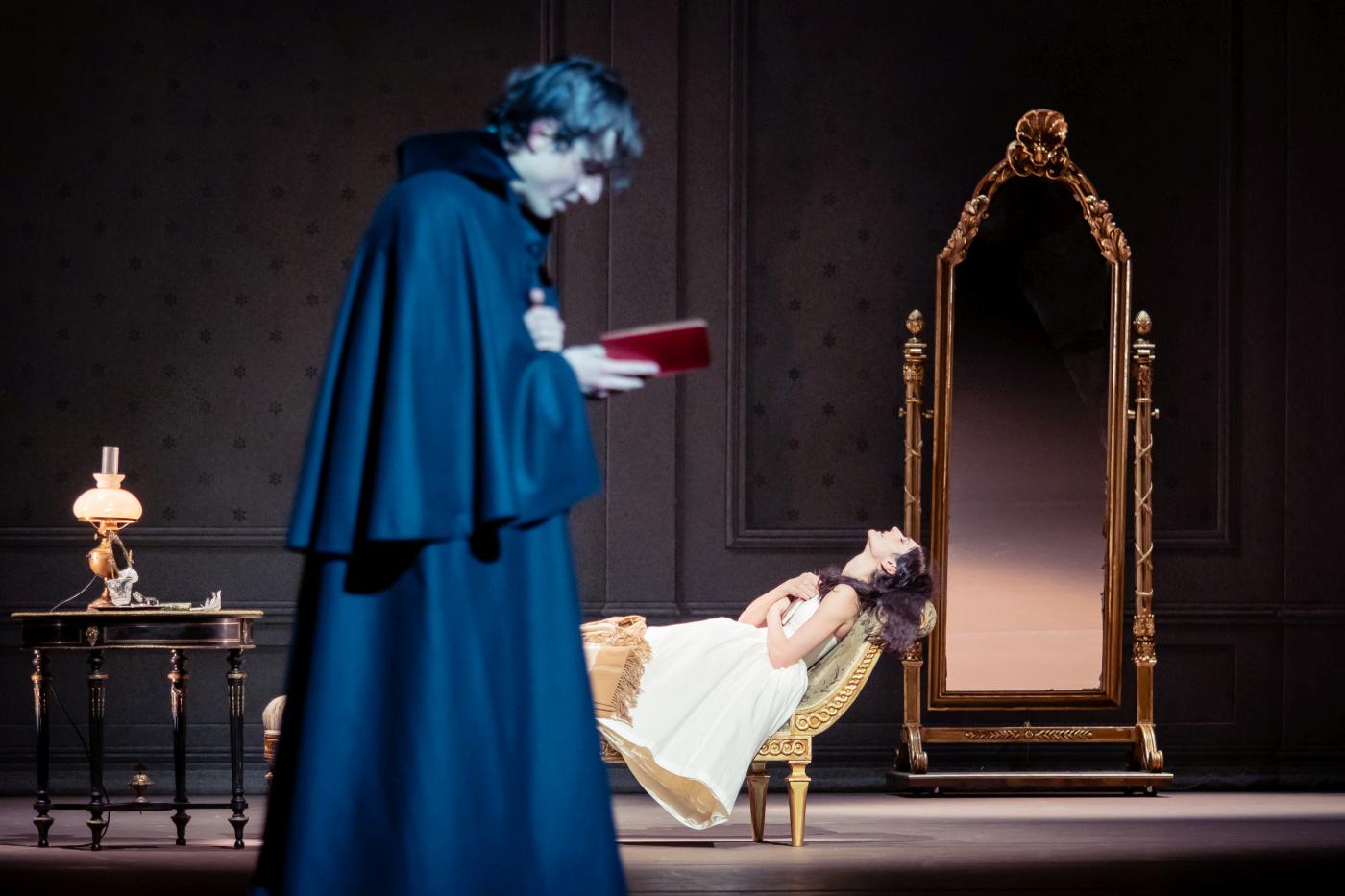
| Links: | Website of the Vienna State Ballet | |
| The Lady of the Camellias – Trailer | ||
| Costume fitting – Jürgen Rose (video) | ||
| Rehearsal with John Neumeier (video) | ||
| Photos: | 1. | Ensemble, “The Lady of the Camellias” by John Neumeier, Vienna State Ballet 2024 |
| 2. | Andrés Garcia Torres, Ketevan Papava (Marguerite Gautier), Duccio Tariello, and Giorgio Fourés; “The Lady of the Camellias” by John Neumeier, Vienna State Ballet 2024 | |
| 3. | Timoor Afshar (Armand Duval) and Ketevan Papava (Marguerite Gautier), “The Lady of the Camellias” by John Neumeier, Vienna State Ballet 2024 | |
| 4. | Ketevan Papava (Marguerite Gautier), “The Lady of the Camellias” by John Neumeier, Vienna State Ballet 2024 | |
| 5. | Ketevan Papava (Marguerite Gautier) and ensemble, “The Lady of the Camellias” by John Neumeier, Vienna State Ballet 2024 | |
| 6. | Timoor Afshar (Armand Duval) and Ketevan Papava (Marguerite Gautier), “The Lady of the Camellias” by John Neumeier, Vienna State Ballet 2024 | |
| 7. | Ketevan Papava (Marguerite Gautier) and Timoor Afshar (Armand Duval), “The Lady of the Camellias” by John Neumeier, Vienna State Ballet 2024 | |
| 8. | Timoor Afshar (Armand Duval) and Ketevan Papava (Marguerite Gautier), “The Lady of the Camellias” by John Neumeier, Vienna State Ballet 2024 |
|
| 9. | Ketevan Papava (Marguerite Gautier) and Eno Peci (Monsieur Duval), “The Lady of the Camellias” by John Neumeier, Vienna State Ballet 2024 |
|
| 10. | Ketevan Papava (Marguerite Gautier), Hyo-Jung Kang (Manon Lescaut), and ensemble; “The Lady of the Camellias” by John Neumeier, Vienna State Ballet 2024 | |
| 11. | Timoor Afshar (Armand Duval), Hyo-Jung Kang (Manon Lescaut), and Marcos Menha (Des Grieux); “The Lady of the Camellias” by John Neumeier, Vienna State Ballet 2024 | |
| 12. | Ketevan Papava (Marguerite Gautier) and Timoor Afshar (Armand Duval), “The Lady of the Camellias” by John Neumeier, Vienna State Ballet 2024 |
|
| 13. | Ketevan Papava (Marguerite Gautier) and Timoor Afshar (Armand Duval), “The Lady of the Camellias” by John Neumeier, Vienna State Ballet 2024 | |
| 14. | Timoor Afshar (Armand Duval) and Elena Bottaro (Olympia), “The Lady of the Camellias” by John Neumeier, Vienna State Ballet 2024 | |
| 15. | Timoor Afshar (Armand Duval) and Ketevan Papava (Marguerite Gautier), “The Lady of the Camellias” by John Neumeier, Vienna State Ballet 2024 | |
| all photos © Vienna State Ballet/Ashley Taylor | ||
| Editing: | Kayla Kauffman |
